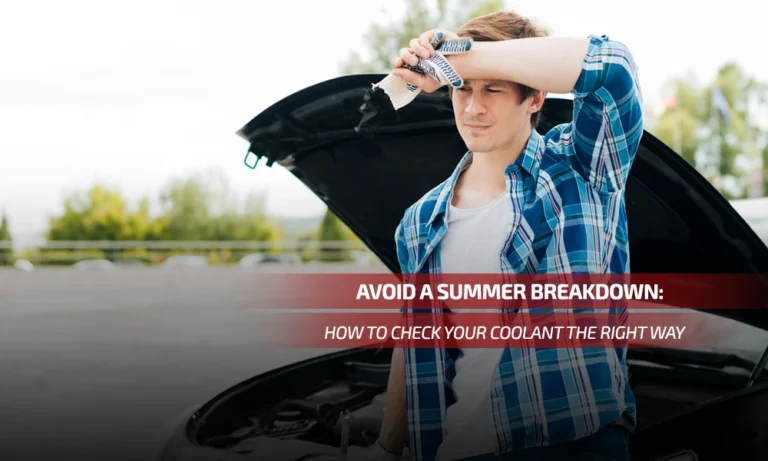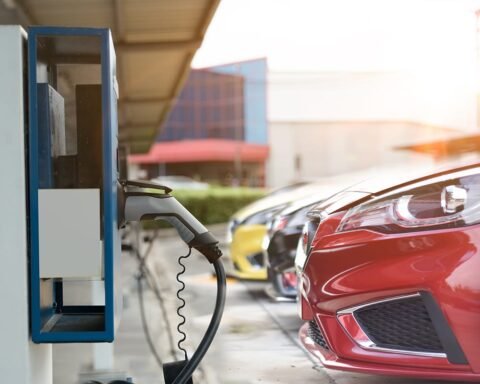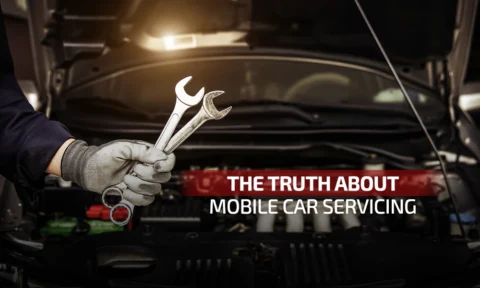In the UAE, summer doesn’t just bring heat.
It brings engine-straining, tire-blistering, traffic-jamming heat that can push any vehicle to its limit.
And while many drivers obsess over tire pressure or air conditioning, there’s one vital check that often gets skipped: coolant.
Coolant (or antifreeze) isn’t just colorful liquid in a plastic bottle. It’s what stands between your engine and a very expensive meltdown.
And yes—checking it is way easier than you think.
Why Coolant Matters More in the UAE Than Almost Anywhere Else
In most countries, coolant protects your engine from freezing and overheating.
In the UAE, we only care about one of those: overheating.
With daily temps hitting 45°C+ (113°F), your engine is already fighting hard.
The last thing you want is to run low on coolant, boil over in Sheikh Zayed Road traffic, and watch your dashboard light up like a disco.
Step-by-Step: How to Check Your Car’s Coolant Like a Pro
When to check it:
Early morning or after the engine has cooled completely. Checking when the engine is hot can cause burns.
What you’ll need:
- A clean rag
- Gloves (optional but smart)
- Coolant (refer to your owner’s manual for the correct type)
Steps:
- Pop the hood and find the coolant reservoir. It’s usually a white or translucent plastic tank with “MIN” and “MAX” lines.
- Visually check the level. If the coolant is below “MIN,” you need a top-up.
- Never open the radiator cap when hot. If needed, wait until cool, then unscrew slowly.
- Top it up carefully using the correct coolant—not water.
- Inspect for leaks underneath the car or around the radiator cap. Any pink, green, or orange puddles = red flag.
How do I know if my coolant is bad or old?
Coolant should be clean and bright (usually green, pink, or orange depending on type).
If it looks rusty, brown, or has particles floating inside—it’s time to flush and replace it.
Most manufacturers recommend changing coolant every 2–3 years, but in high-heat zones like Dubai, once every 2 years is safer.
Warning Signs You’re Running Low on Coolant
You don’t need to be a mechanic to spot trouble early:
- Temperature gauge creeping toward the red zone
- Sweet smell coming from the engine bay
- Visible steam or hissing from under the hood
- Heater not working properly in winter
- Engine shuts down or runs roughly
If you spot any of these and ignore them—you’re playing with fire (literally).
Can I just use water if I don’t have coolant?
Technically, yes—in an emergency.
But it’s a bad long-term move. Coolant is specially formulated to prevent rust and raise the boiling point of water.
Using plain water in the UAE heat can lead to corrosion, overheating, and costly repairs.
Always top up with the right mix.
Coolant Tips for Summer Survival in the UAE
- Use pre-mixed coolant to avoid mistakes
- Park in shaded areas whenever possible
- Have your cooling system pressure tested annually
- Flush your coolant if it’s more than 2 years old
- Don’t ignore leaks—they never fix themselves
How much does it cost to flush and refill coolant in Dubai?
On average, a full flush and refill costs between AED 200 to AED 400, depending on your car model and where you go.
It’s a small price compared to the AED 5,000+ you might spend fixing a heat-damaged engine.
Why UAE Drivers Shouldn’t Skip This
Unlike Europe or North America, the UAE’s driving conditions include extreme temperatures, long idle times in traffic, and high-speed highway runs.
Your coolant is doing overtime every single day.
And cars are getting smarter—but they’re still not immune to old-school overheating.
So, if your car hasn’t had a coolant check this year, now’s the time.
UAE Heat Is Brutal
Cooling issues are one of the top reasons for summer breakdowns in the UAE. But they’re also one of the easiest to prevent.
This summer, don’t just blast the AC and hope for the best. Open that hood, check your coolant, and drive with peace of mind.Because in Dubai, Abu Dhabi, or Sharjah—being stranded in 47°C heat isn’t just inconvenient, it’s dangerous.






